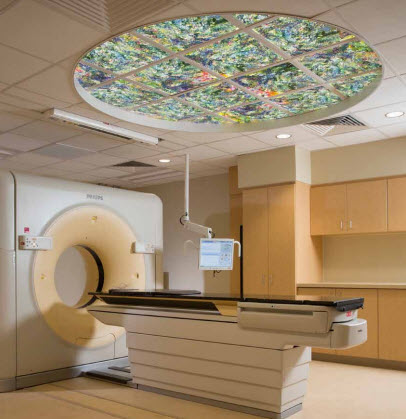
03 Jun An Integrated Healthcare Facility Can Change “OW” to “AH”
For many people, heading to a clinic or a hospital doesn’t always have a pleasant connotation. From the prospect of getting a flu shot to a medical procedure to surgery, there is usually a certain amount of discomfort or downright pain involved.
Advancing medical procedures and modern equipment have certainly improved the experience of “going to the doctor,” but there are still moments when it simply hurts—–unless, there are wholesome ways to distract the patient during the process so they aren’t focused on their discomfort.
Here are some practical Feng Shui suggestions for making a patient’s visit more positive:
Soothe with Sound
- Sounds can be a great interference for someone going through an uncomfortable procedure. Dentists already know this. There are wireless headsets that can easily fit over someone’s ears to enable them to listen to music, poetry or nature sounds (rain, thunder, rushing water, etc.) to keep their minds off what’s happening. Ambient music can make a difference, especially if tailored to the patient’s preference—-classical, folk, new age, etc.
Visually Distract
- Visual distractions can help people remove themselves from their situation. This can take the form of posters or artwork on the wall, or even the ceiling (see Vara Kamin’s Impressions of Light). An aquarium provides a connection to nature not only by the presence of fish and plants but by the inherent move of the water. Artwork on the wall has the potential for doing this as well.
Engage the Senses
- Engaging the tactile senses is another way to minimize pain or stress. Whether a blanket or a teddy bear, the patient will have something soft and cuddly to touch and feel which can be a cue for comfort and safety. Again, this is their preference—-soft yarn of an afghan, squishy pillow, warm blanket or a fluffy towel—-or a teddy bear.
Diffuse it
- Using a diffuser with an assortment of aroma selections can be another means to creating a less painful experience for a patient. At the very least all means should be taken to minimize medical smells that can act as a trigger for fear.
Any one of these suggestions would create a better experience for a patient who is dreading a medical procedure. The idea of a personal environment of this nature does, however, fly in the face of efficiency and timeliness. Plus it brings up the question of staff—–who would be able to make these things happen?
Yet, what if the time was taken and the effort made to assure that each patient could select their favorite music, choose some artwork that they’re drawn to, grab a blanket to curl up in and breathe in a faint hint of lavender as they prepared for their medical treatment? Would it hurt less? Possibly. Would it be less stressful? Absolutely.
I argue the patient would reflect on the personal care they were given, less on the pain, and, on some level, their body would relax and breathe a sigh of relief . . . “Ahhh.”
